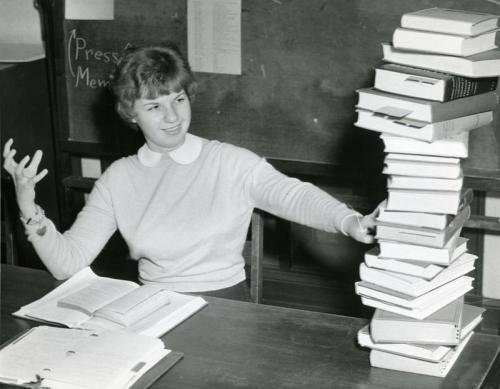Student Life
The college experience traditionally means four years at a liberal arts university with a wide, green quad, a variety of extracurricular activities, and all the amenities considered necessary for life away from home. Of course, there are many other kinds of college experiences, including the ones offered by Loyola’s urban setting. What’s more, this archetype is only a recent development in the history of higher education. Life at college, including Loyola, once looked very different.
For example, though rare now, single sex colleges were once considered the preferred educational experience. Many colleges educated men or women exclusively, while others allowed women to attend for degrees in a limited number of fields, such as nursing, education, or social work. Loyola was an all-male college, with exceptions, for nearly a century before becoming fully coeducational in 1966. The first exceptions to this rule were the professional schools – women attended Loyola’s medical school starting in 1910, the School of Social Work starting in 1914, the School of Law starting in the 1920s, and the School of Nursing starting in 1935. Mundelein College, Loyola’s neighbour institution, was primarily an all-women college for its entire existence, 1929-1991, although the two institutions often allowed their students to enrol in a limited number of classes at the other institution.
Early faith-based colleges were often focused on defining their academic, spiritual, and social roles in the world of education. At the time Loyola was founded, many Catholic colleges were just beginning to offer courses in “modern” subjects like science, business, and law in addition to their traditional curriculum of liberal arts. In recognition of the needs of their students, Loyola offered science and business courses, in addition to liberal arts, from the beginning. In the realm of athletics, however, the college was conflicted. While the Jesuit administrators acknowledged the value of exercise and recreation, they desired Loyola’s academic reputation to come first.
This section tells the stories of Loyola’s students, showing how campus life changed as the student body grew and diversified, redefining the college experience at Loyola.
Champions and a Cinderella: The 1963 and 2018 Men's Basketball Teams >>

